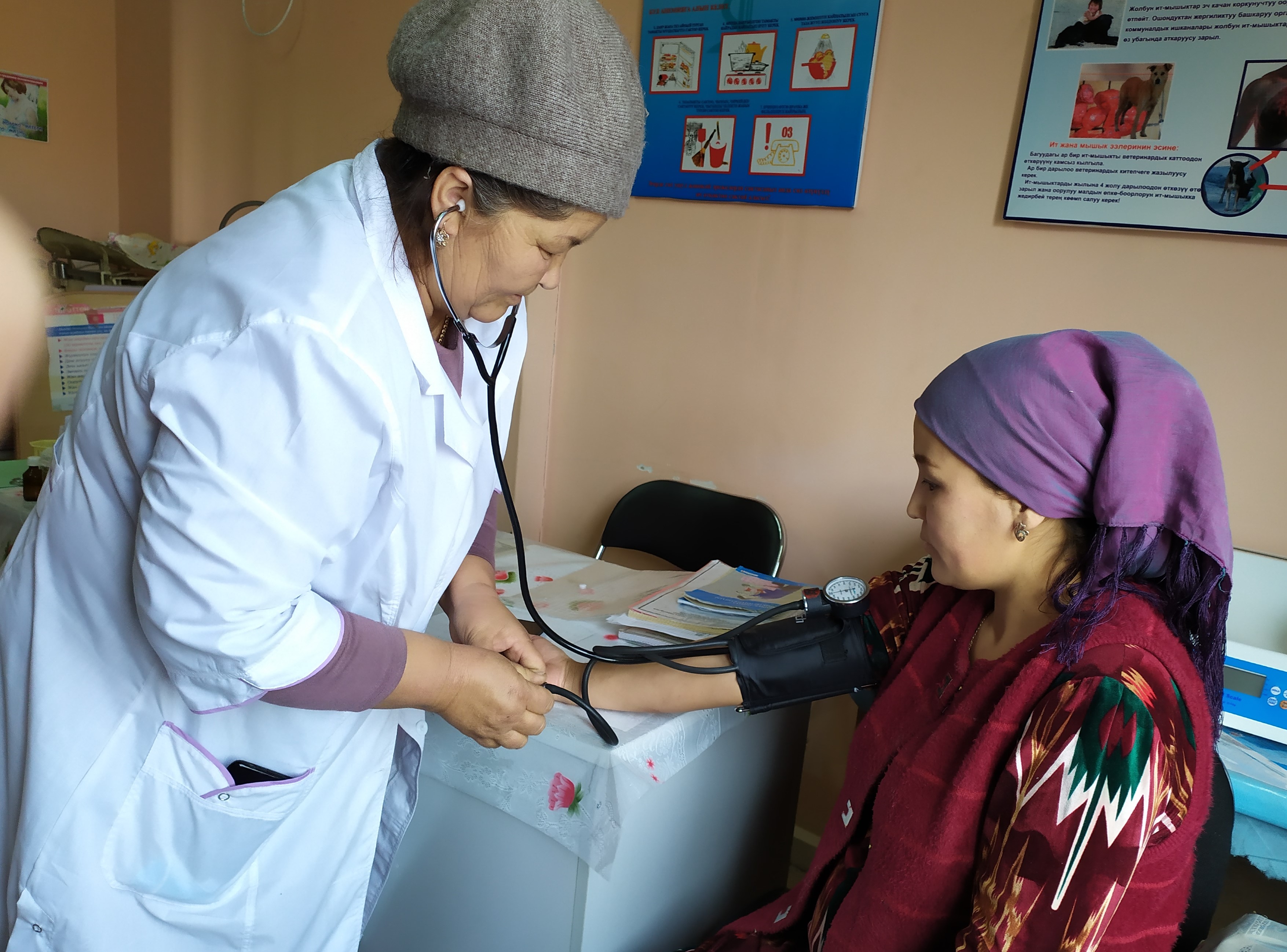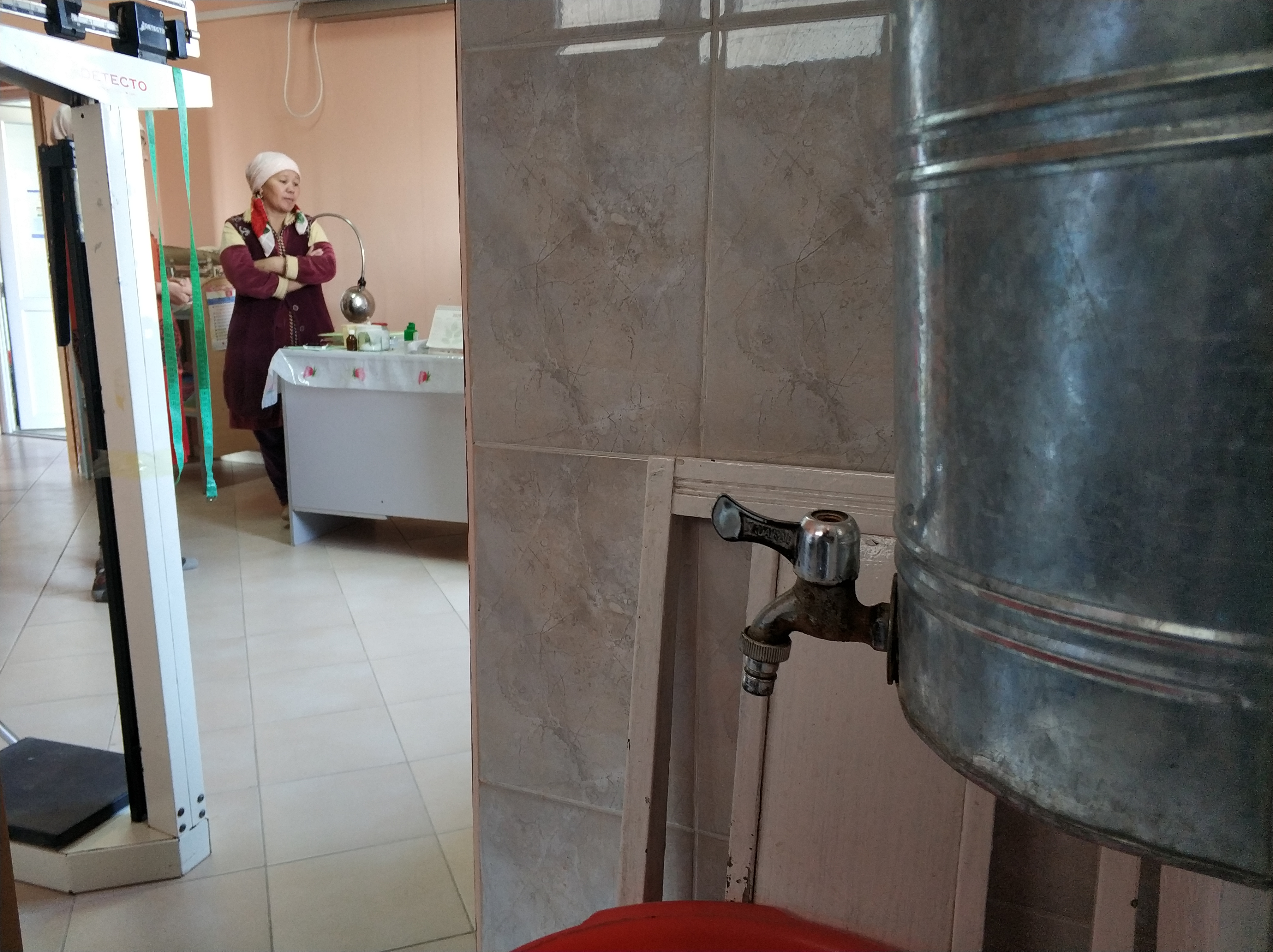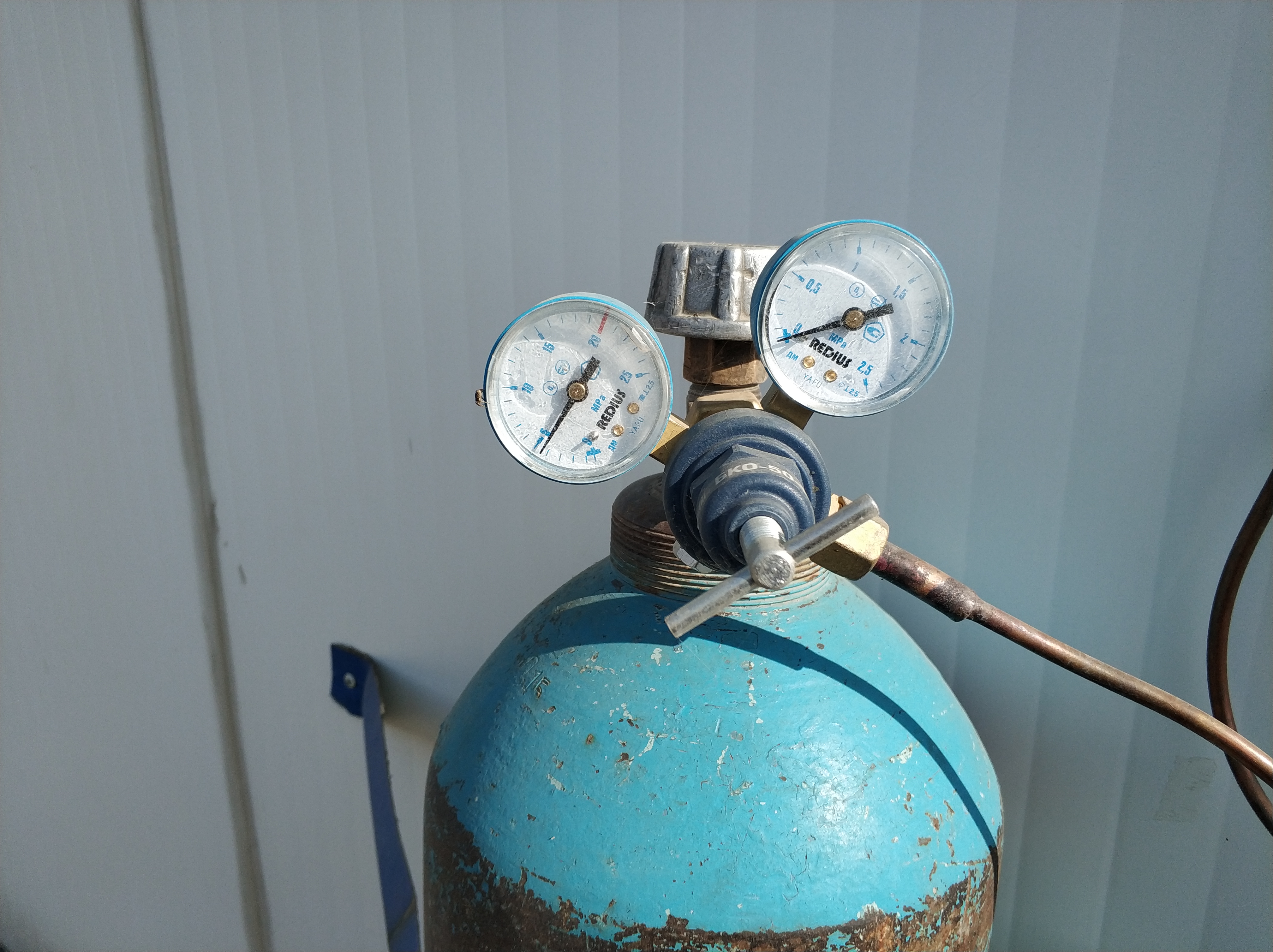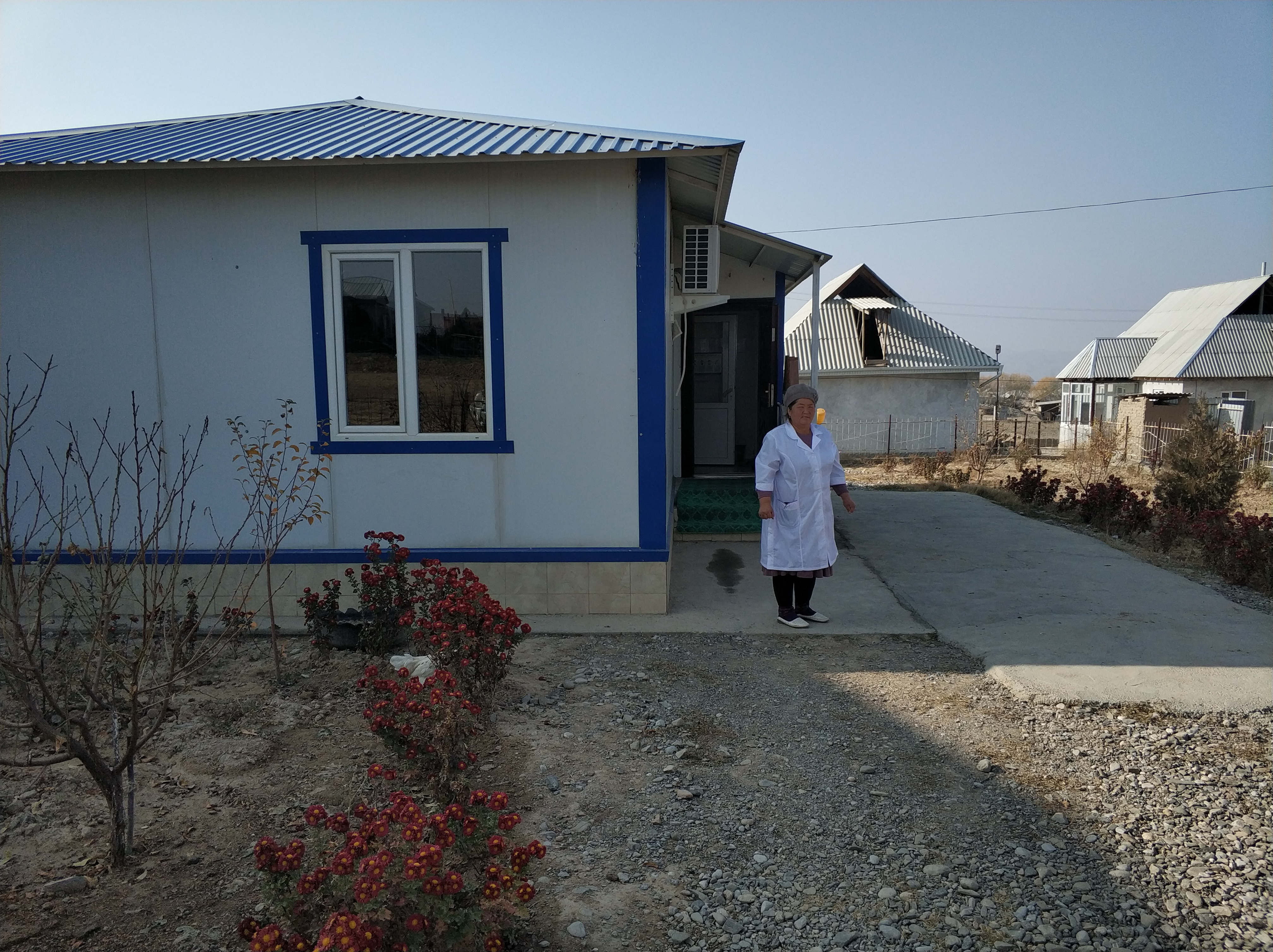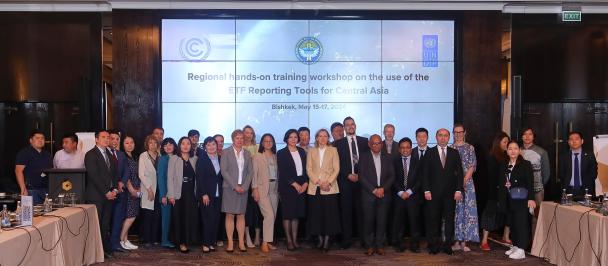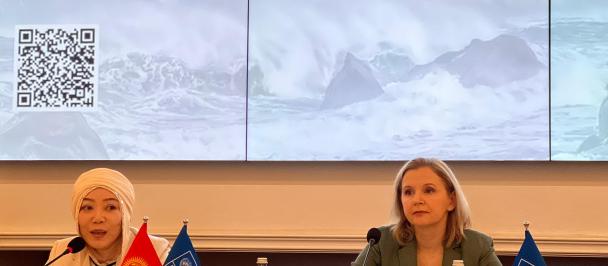Kanzada Atazova, a paramedic of Zhin-Zhigen medical station, is examining a patient. Photo: UNDP Kyrgyzstan.
What are the rural residents doing when the situation with COVID-19 has worsened again and the infection rates have increased? The residents of the village of Zhin-Zhigen in the Batken Oblast are fighting the disease on their own. There is only a small paramedical and midwifery station with two nurses who take care of the villagers.
This station is located in the center of Zhin-Zhigen. Upon arrival of the journalists, Kanzada Atazova, a paramedic, was examining rural women:
“Yesterday blood pressure was 100/60, today it is lower — 90/60. Are you taking the prescribed medications?”
“Yes. Toxicosis has become a little easier to bear. It is no longer a big trouble,” says 28-year-old Zhumagul Zhorobekova, a mother of four children.
Kanzada comes to the paramedical and midwifery station almost every day since the new facility has been opened.
“Earlier, the medical station was based in a dilapidated building on the edge of the village. There were no appropriate facilities for the work. The paramedic used to do house-to-house surveying. But now the patients are admitted in warm, clean, and bright rooms,” proudly says Zhumagul Zhorobekova.
Then we noticed that young mothers walk barefoot inside the station. Last winter, the building was warmed up by several heaters only. They hope that this winter won’t bring troubles with heating.
“This year, we have air-to-air heat pumps provided within the UNDP-OFID Energy Access SMEs Development Project. Energy-saving heat pumps ensure the appropriate temperature in the rooms in a short time,” explains paramedic Kanzada Atazova during a tour around the paramedical and midwifery station.
These heating devices are more efficient compared to simple electric heaters. The energy efficiency class of GREE U-CROWN split-systems is A+. In the cooling mode, the energy efficiency factor is 7.5; in the heating mode, it is 5.1. It means that heat generation is 5.1 times more than power consumption. Noiseless models of this series can heat rooms in extreme temperatures of -30°C. For comparison, conventional air-conditioners, designed for operation in winter can be used at outdoor air temperature up to -15...-20°C.
The new building of the station has four rooms and a flower garden in the courtyard. One of the rooms has been specially equipped for patients with COVID-19 or pneumonia in the worst-case scenario. The villagers made an oxygen tank for the artificial lung ventilation machine.
Kanzada Atazova says, “People are really helpful. Our compatriots who are working in Russia made this large oxygen tank and installed it. This is a stationary version. Graduates of the Turkish Lyceum bought a portable oxygen concentrator for us. We use it in outpatient settings.”
Ikram Zhumabayev, the village head, who says that the local population is mainly engaged in agriculture and trade, helps nurses propagate anti-COVID-19 measures.
According to him, the only way to prevent the spread of the disease is to visit crowded places and explain safety rules.
“As a result of outreach activities, people became aware of the danger. They don’t go to restricted areas and don’t do forbidden things. Now, when the school re-opened its doors for children, all of them follow safety rules. The pandemic has shown that the village needs an in-patient facility,” says Mr. Zhumabayev.
Local residents have to take people with severe diseases to the district hospital. They waste precious time on the transportation and accomodation procedures in medical institutions.
Mr. Zhumabayev says, “Next year, we are planning to open an in-patient facility with 6–8 beds in the building of the paramedical and midwifery station. Previously, we used to waste a lot of time to transport seriously ill people to the district hospitals. The village needs an in-patient facility.”
According to Kanzada Atazova, the only paramedic of the village, now she is working to obtain a permit to store and sell medicines in the medical center. She is also trying to provide clean drinking water for the facility.
She says, “We are not allowed to sell medicines in the paramedical and midwifery station. I am currently working to resolve this issue. We are facing serious problems due to the lack of medications. The relatives of patients often have to buy medicines beyond our village.”
Another resident of the village of Zhin-Zhigen, 60-year-old Kantaiym Imarova, lives with her husband. As the village has no appropriate infrastructure, the children had to leave for Bishkek and Russia.
“Our most pressing problem is the absence of a kindergarten. Recently, I had to send my grandson back to Bishkek because there is no kindergarten, parks, or playgrounds in the village. Me and my husband were upset. Is there any way out? We need to build a kindergarten and a gym for young people here,” says Kantaiym, a village resident.
The village of Zhin-Zhigen with a population of 1200 people is located in the foothills, near idle coal mines, 7 km far from from the town of Kyzyl-Kiya. As to the social facilities in the village, there is only one junior secondary school and a paramedical and midwifery station.

 Locations
Locations